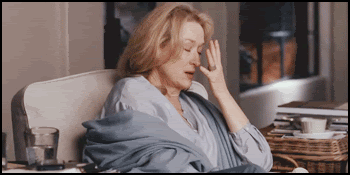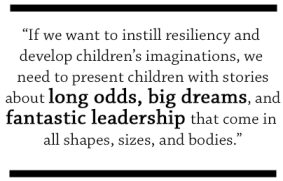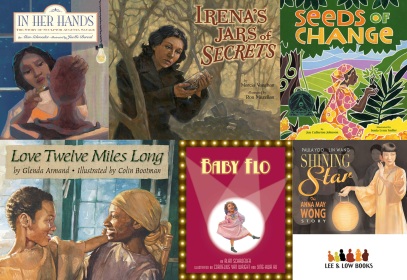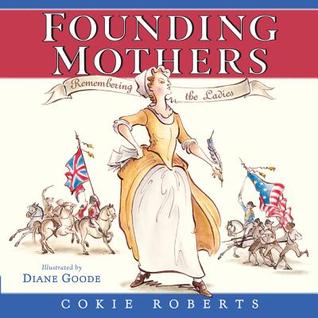new posts in all blogs
Viewing: Blog Posts Tagged with: women in history, Most Recent at Top [Help]
Results 1 - 8 of 8
How to use this Page
You are viewing the most recent posts tagged with the words: women in history in the JacketFlap blog reader. What is a tag? Think of a tag as a keyword or category label. Tags can both help you find posts on JacketFlap.com as well as provide an easy way for you to "remember" and classify posts for later recall. Try adding a tag yourself by clicking "Add a tag" below a post's header. Scroll down through the list of Recent Posts in the left column and click on a post title that sounds interesting. You can view all posts from a specific blog by clicking the Blog name in the right column, or you can click a 'More Posts from this Blog' link in any individual post.

By: Franca Driessen,
on 10/3/2015
Blog:
OUPblog
(
Login to Add to MyJacketFlap)
JacketFlap tags:
feminism,
feminist,
philosophers,
gender equality,
women in history,
*Featured,
gender inequality,
margaret cavendish,
history of philosophy,
Arts & Humanities,
Women in Philosophy,
Advance trading methods,
Jacqueline Broad,
mary astell,
recovery project,
The Philosophy of Mary Astell,
women philosophers,
Books,
Philosophy,
Add a tag
For the most part, the practice of philosophy tends to be collective and conversational and collaborative. We enjoy reading what others have written on a given topic, and we like to hear what others have to say, because different people see things differently.
The post Women in the history of philosophy appeared first on OUPblog.

By: Michael Smith,
on 7/3/2015
Blog:
OUPblog
(
Login to Add to MyJacketFlap)
JacketFlap tags:
VSI,
Very Short Introductions,
women's history,
women in history,
*Featured,
Quizzes & Polls,
Susan Ware,
VSI online,
Gerda Lerner,
history quiz,
Books,
quiz,
History,
women,
american history,
Add a tag
Over the past several decades, few fields of American history have grown as dramatically as women’s history. Today, courses in women’s history are standard in most colleges and universities, and historians regularly produce scholarship on women and gender. In 1981, historian Gerda Lerner provocatively challenged, “always ask what did the women do while the men were doing what the textbook tells us was important."
The post The history of American women [quiz] appeared first on OUPblog.

By:
jilleisenberg14,
on 3/10/2014
Blog:
The Open Book
(
Login to Add to MyJacketFlap)
JacketFlap tags:
children's books,
holidays,
History,
diversity,
Reading Aloud,
reluctant readers,
women's history month,
Educators,
Wangari Maathai,
women in history,
Curriculum Corner,
Girls/women,
Add a tag
 Jill Eisenberg, our Resident Literacy Expert, began her career teaching English as a Foreign Language to second through sixth graders in Yilan, Taiwan as a Fulbright Fellow. She went on to become a literacy teacher for third grade in San Jose, CA as a Teach for America corps member. She is certified in Project Glad instruction to promote English language acquisition and academic achievement. In her column she offers teaching and literacy tips for educators.
Jill Eisenberg, our Resident Literacy Expert, began her career teaching English as a Foreign Language to second through sixth graders in Yilan, Taiwan as a Fulbright Fellow. She went on to become a literacy teacher for third grade in San Jose, CA as a Teach for America corps member. She is certified in Project Glad instruction to promote English language acquisition and academic achievement. In her column she offers teaching and literacy tips for educators.

Irena’s Jars Of Secrets
I entered the education field to broaden the minds of a new generation and teach the truths that I felt I had missed or was denied in my own education. Indeed, I was not alone in those motivations. According to the Primary Sources project by Scholastic and the Bill & Melinda Gates Foundation, of the more than 20,000 public school classroom teachers polled, 85% of teachers say they chose the profession in order to make a difference in children’s lives.
Despite my righteous ambitions, once in the classroom, I was hesitant to broach the conversation about gender with a mixed class of boys and girls. So many of my own college classes that focused on social justice and equality issues were almost entirely women.
Acutely aware of my students’ fragile perception of themselves, I was intimated by the prospect of guiding the discussion. When I was leading a classroom of my own, it was often easier to concentrate on the benign world of synonyms, dictionary skills, main idea, and genre features than push my students to think about what role gender plays in achievement, history, and identity.
I wondered: How do we teach about women’s history and contributions without alienating boys? Will boys disengage if a girl or woman is on the cover or is the main character? In this day and age, do girls still need explicit attention drawn to high-achievers that share their gender?
Leading up to my first month of March as a teacher, I thought I would “just” read more books with women as the central figures during Women’s History Month, but not explicitly point out that these were all women so as not to freak out boys and hope the girls would pick up on my subliminal messages of empowerment….

Insert face palm here.
This thinking was a huge disservice to ALL of my students’ educations. As I introduced books with prominent women historic figures or girl characters, I realized if the books were about gender, we would discuss identity and tolerance. Other times if the story just happened to have a girl character, but gender wasn’t a central feature of the story, my scholars just wanted to focus on the great story and how the universal lessons applied to their lives.
Four lessons to think about when teaching women’s history so both boys AND girls grow and learn:
- Two words: cool stories. Above all, if it’s a great story, it doesn’t matter who is on the cover. Everyone will want to sit up and participate.
- Pick contemporary and diverse stories. To continue to show the relevancy of the women’s movements and contributions of women to society, we owe it to all of our students to find more contemporary examples of women figures and showcase more diverse participants in equality. Let’s keep exposing our kids to women of today and of different backgrounds.
- Show explicit examples of men championing women. Boys need to see great role models of men advocating for women alongside or behind the scenes. There are plenty of men who have been in the trenches with women fighting for social
 justice and as invested in their wives, daughters, sisters, and mothers achieving great success in a field of study as the women themselves. If we want future generations of men to respect and support women, we need to offer boys examples of how to recognize and champion women’s contributions. Boys and girls need to see that the struggles for equality impacted everyone and were not about one group’s success at the other’s detriment.
justice and as invested in their wives, daughters, sisters, and mothers achieving great success in a field of study as the women themselves. If we want future generations of men to respect and support women, we need to offer boys examples of how to recognize and champion women’s contributions. Boys and girls need to see that the struggles for equality impacted everyone and were not about one group’s success at the other’s detriment.
- Talk about the universal lesson and character traits. Everyone can learn from a story about overcoming obstacles, persistence, and courage. Women like Wangari Maathai and Pura Belpré fought for what they loved and believed was right first, and then fought for who they were and who they represented. If we want to instill resiliency and develop children’s imaginations, we need to present children with stories about long odds, big dreams, and fantastic leadership that come in all shapes, sizes, and bodies.
Throughout the year and especially during Women’s History Month, we need to teach that gender shouldn’t be an excuse to bar someone from exploring or contributing to a field of study. Concurrently, we want to show all students that gender can offer a unique perspective or approach that should be recognized and celebrated.
Alongside our girls, boys need the language of equality and a broader view of history. Women’s contributions advanced our society and continue to impact all of us. We need to teach that gender totally does matter and, at the same time, totally doesn’t matter.

Shining Star: The Story Of Anna May Wong
Susan B. Anthony Is Great, But Who Else Do We Have? Here are books about high-achieving women from diverse backgrounds with diverse pursuits.

Baby Flo: Florence Mills Lights Up The Stage
Women and The Men That Championed Them. Explore these books with awesome men celebrating awesome women:

Killer Of Enemies
Stories That Will Hook ’Em All. Here are stories so fun that it won’t matter who is on the cover…but the cover just happens to feature a girl:
Filed under:
Curriculum Corner Tagged:
children's books,
diversity,
Educators,
Girls/women,
History,
holidays,
Reading Aloud,
reluctant readers,
Wangari Maathai,
women in history,
women's history month 

Founding Mothers: Remembering the Ladies
by Cokie Roberts
illustrated by Diane Goode
Harper, 2014
review copy provided by the publisher
In 2005, NPR political commentator Cokie Roberts wrote a 384 page adult book,
Founding Mothers: The Women Who Raised Our Nation
This picture book version of her work gives ten famous (and not so famous) women a double-page spread, and highlights Women Writers and Women Warriors with paragraph-length blurbs. The ten ladies are Eliza Lucas Pinckney, who at 19, while running three large plantations while her father fought for England against Spain, succeeded in raising indigo for the first time; Deborah Read Franklin, Ben's wife, who ran all his businesses in the States while he was in England; Mercy Otis Warren, an influential writer; Phillis Wheatley, a poet and a slave; Abigail Adams, letter-writing wife of John; Martha Washington, who spent every winter of the eight years of the Revolutionary War in military camps with husband George; Esther DeBerdt Reed, writer and fundraiser for the Revolutionary War effort; Sarah Livingston Jay, wife of John Jay; Catharine Littlefield Greene, wife of General Nathaniel Greene who, when running the plantation after his death, helped Eli Whitney with his cotton gin invention; and Dolley Madison, brave wife of James.
As the
review in the New York Times points out, this book would be a whole lot more useful with a table of contents and a more discernible organization.
That criticism aside, this book provides some nice short texts about historic women. I can imagine students being charged with placing each woman on a continuum of influence, based on the information given by Roberts in the text, and arguing for their placements. I can imagine students choosing a woman to research in more detail, and then debating with another student about whose woman was the most influential. Even just the conversation about what makes a person influential would be fascinating, as would a discussion of the problem of how to know historic women deeply when they often did not leave a trail of primary source material for historians to study.
This book would also be fascinating to use in a study of the art of calligraphy. Diane Goode's pen and sepia ink illustrations in the style of the period, and her reproductions of each woman's signature made me want to get out my pen nibs and resurrect the skill I learned in high school art class.
Touch the Sky: Alice Coachman, Olympic High Jumperby Ann Malaspina
illustrations by Eric Velaszuez
Albert Whitman & Company, 2012
review copy provided by the publisher
This biography of the first African American woman to win Olympic Gold is written as a series of free-verse poems. Malaspina does a fabulous job showing the reader how Alice the child became Alice the Olympian.
Alice's dream and her talent were jeopardized by the poverty of her family and the color of her skin. But all along the way, people believed in her and opened doors for her. She never let them down. She literally cleared every hurdle put before her.
Photographs, the author's note, and the bibliography (including several websites) help to bring the story into sharp focus.
As you may know, today is International Women’s Day. Although it has become a bit of a Valentine’s Day sequel in some communities, many countries are still recognizing the holiday for it’s original purpose. The United Nations created this day to recognize women who have impacted our world, as well as a way to focus public service efforts towards women in need around the world.
Each year since 1975 (when the United States began celebrating IWD), the United Nations selects a theme to focus the day’s efforts. This year’s theme is “Empower Rural Women- End Hunger and Poverty”, and I encourage you to find out more about what you can do to participate in this important cause.
Another way to celebrate women is by learning about a woman who has changed history, particularly those who have not received recognition for her contributions. Remembering these women, many of whom weren’t recognized in their own day or have since been forgotten, is an important aspect of realizing how far we have come, and how far we have yet to go, in terms of women’s rights. Click on the image below for a selection of Lee & Low titles that introduce you to some such women, each of whom, we believe, should have her own holiday.

Filed under:
Diversity Links,
Holidays Tagged:
International Women's Day,
IWD,
United Nations,
women in history 








 I am still looking for great picture books that are biography or fictionalized biographies of some sort. I think so much can be done with great picture book biographies and the new ones being published let our kids in on some stories from history that weren't available when I was a child. Biographies from my childhood all focused on presidents, inventors, etc. Very famous people from history. But lately, there have been biographies published about people who made contributions to the world in many different ways. Some went on to become famous and others did not. The fact that we now have these to share with our students is exciting. Knowing how people throughout history made a difference is so important.
I am still looking for great picture books that are biography or fictionalized biographies of some sort. I think so much can be done with great picture book biographies and the new ones being published let our kids in on some stories from history that weren't available when I was a child. Biographies from my childhood all focused on presidents, inventors, etc. Very famous people from history. But lately, there have been biographies published about people who made contributions to the world in many different ways. Some went on to become famous and others did not. The fact that we now have these to share with our students is exciting. Knowing how people throughout history made a difference is so important.
Last week, while visiting the Dublin Library, I noticed BASKETBALL BELLES: HOW TWO TEAMS AND ONE SCRAPPY PLAYER PUT WOMEN'S HOOPS ON THE MAP by Sue Macy. This book was on the shelf of new children's books and I picked it up. It is a great story of the first ever girls college basketball game. The story is told through the eyes of Agnes Morley, a guard on Stanford's team that day.
by Sue Macy. This book was on the shelf of new children's books and I picked it up. It is a great story of the first ever girls college basketball game. The story is told through the eyes of Agnes Morley, a guard on Stanford's team that day.
This book is a great read. There is not a lot of text and it focuses almost exclusively on the actual game in 1896. Readers quickly understand how big of deal it was for women to play basketball and to realize how far we've come since then. There are no men at the game because many believed it was not proper for women to perspire in front of men. Even the janitors who had to come in during the game to fix a hoop were extremely uncomfortable. In spite of all of this, the game was a huge success and this story tells about this important moment in women's sports.
The author's note at the end of the book includes more information about Agnes Morley as well as other information on women's basketball. Following the note, there is an interesting "Timeline of Women's Basketball". I was amazed as I studied it at how recently women's basketball has really been played officially.
This is a great book. Whether you are looking for books about women in history, great nonfiction read alouds or just great stories to share with kids, this is definitely a must have.
She started out with a dream in a small-town in Ohio. The year was 1928 when she walked into a newspaper office and tearfully declared the love of her life had abandoned her, pregnant and alone. She then took out an add asking for any information leading to the whereabouts of her lost love. The next day she proceeded to write a suicide note, leading the authorities to the top of a bridge, where she sat perched ready to jump…
Mildred Gillars always had a flair for the dramatic and was desperate to be on stage, in the lime-light at any cost. However, after several failed attempts as a Broadway actress, “Midge” followed the love of her life to Germany hoping to some day be his wife.
When war broke out in September 1939, she had already been living there for five years and refused to flee back to America. Was it pride, prejudice, love or the hunger for fame that led to the start of her infamous career as Axis Sally?
Axis Sally, The American Voice of Nazi Germany by Richard Lucas is a fascinating look at the life and trials of Mildred Gillars a.k.a Axis Sally.
For more information or to order your own copy visit
Amazon
















Thank you for your wonderful mention of Alice Coachman's story!
Ann
It's a great book I can't wait to share with my students! Thanks for stopping by the blog!